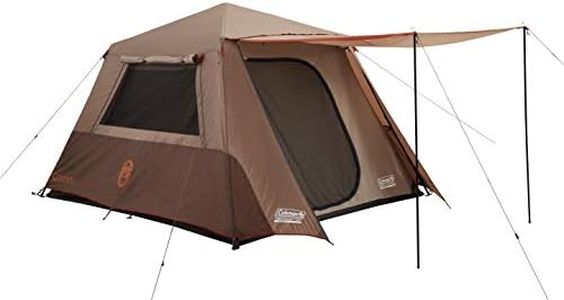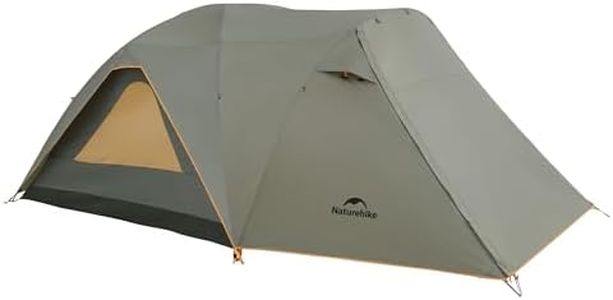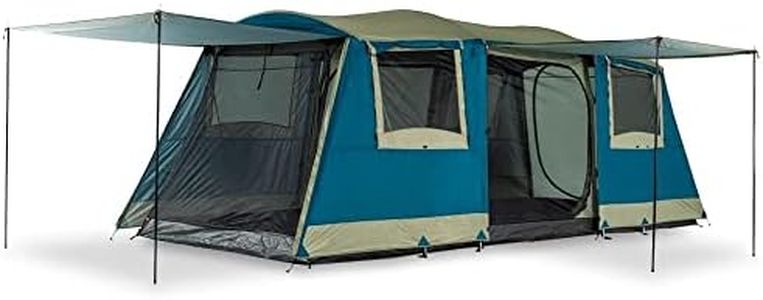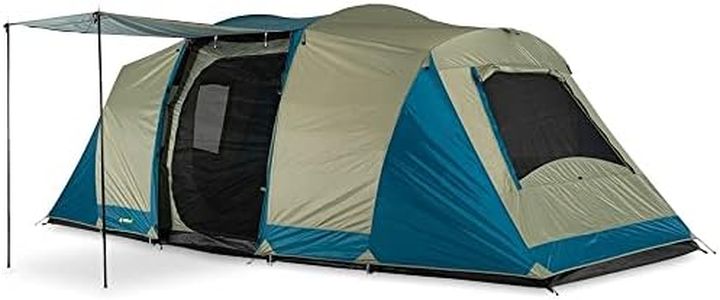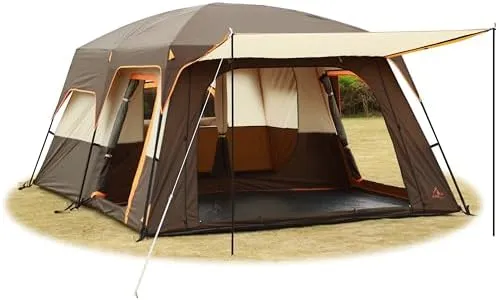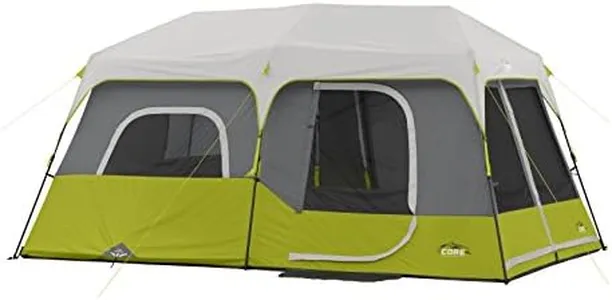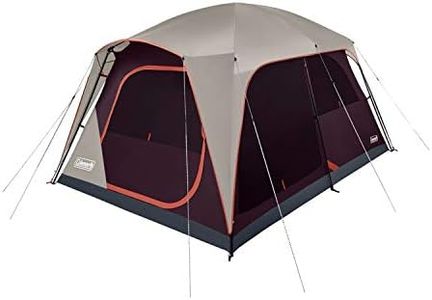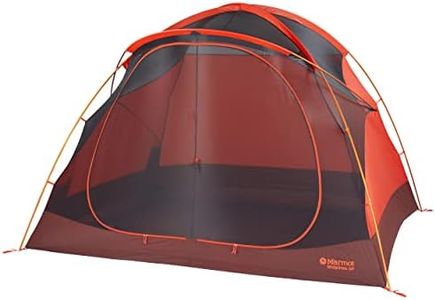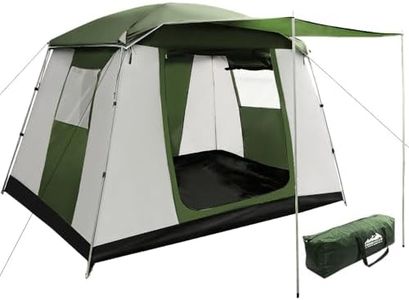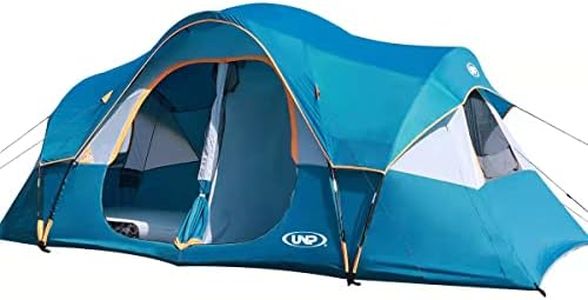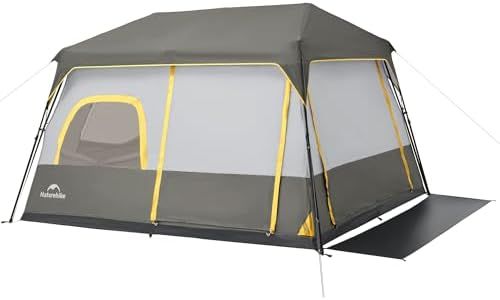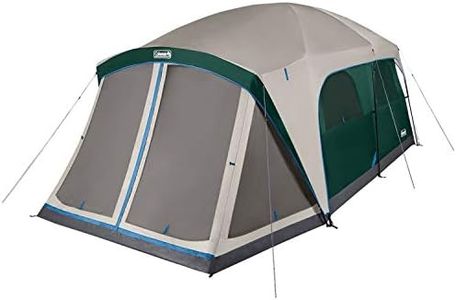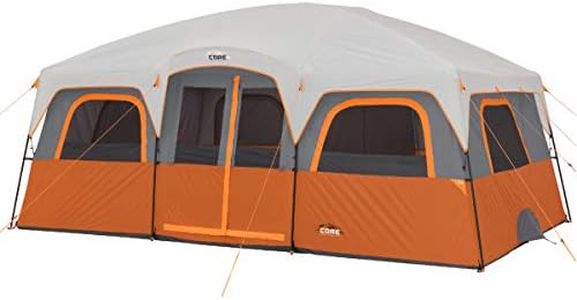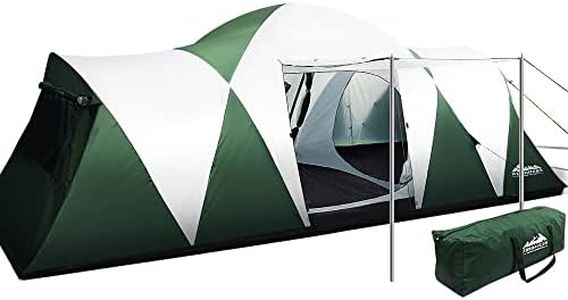We Use CookiesWe use cookies to enhance the security, performance,
functionality and for analytical and promotional activities. By continuing to browse this site you
are agreeing to our privacy policy
10 Best Large Family Tent
From leading brands and best sellers available on the web.Recommended lists
Buying Guide for the Best Large Family Tent
Choosing a large family tent is all about making sure everyone has enough space to sleep and spend time comfortably, as well as ensuring the tent can handle the kind of weather you'll encounter. It's important to think about how many people will use the tent, where you'll set it up (like a campground or more remote spots), and how long you'll be staying. The best tent will make your camping experience enjoyable, safe, and relaxing, so taking the time to compare features is a wise idea.CapacityCapacity refers to the number of people the tent is designed to sleep. This is important because it determines how much space each person will have and whether you'll have room for gear inside the tent. Tent capacities are often optimistic, so a 'six-person' tent might feel snug for six adults with luggage. When choosing, think about the actual number of people and consider going a size up for more comfort, especially if you'll bring bulky sleeping pads or want extra room for gear or activities inside.
Floor Space and LayoutFloor space and layout determine how much room you get inside and how the sleeping and living spaces are arranged. Look at the square footage and shape—some tents have dividers to create multiple rooms, which is great for privacy with families. Larger footprints are more spacious for sleeping and storing bags, while divided areas can be helpful for parents and kids or different groups. Choose a layout that matches your group's needs and sleeping habits.
Height and HeadroomHeight, often called 'peak height,' measures how tall the tent is at its highest point. This matters because it affects whether you can stand up inside and how comfortable it feels for moving around. Tall tents are great for changing clothes and for adults who don't want to stoop, but they can be more affected by wind. For families, a tent you can stand in adds comfort, especially during long stays or rainy days when you're inside more often.
Weather Resistance (Season Rating and Waterproofing)Weather resistance covers how well the tent holds up in different seasons and how it handles rain or wind. A 'three-season' tent covers spring, summer, and fall, suitable for most family trips, while 'four-season' tents can handle harsher weather but may feel stuffy in warm climates. Waterproof ratings (often listed in millimeters) and strong seams help keep you dry in the rain. If you'll camp in unpredictable or wet weather, prioritize higher ratings and features like waterproof floors and rain flies.
VentilationVentilation refers to how well air flows through the tent, which affects comfort and reduces condensation inside. Look for multiple mesh windows, roof vents, or doors for cross-breezes. This is especially important for large family tents, as more people mean more moisture from breathing and activities. If you're camping in hot or humid areas, prioritize tents with lots of mesh and adjustable vents.
Ease of SetupEase of setup describes how simple or complicated it is to pitch the tent. Larger tents can be heavier and more complex, sometimes requiring two or more people to set up. Features like color-coded poles or instant frames can make the process quicker and less stressful. If your group includes children or you want to save time at camp, focus on user-friendly tent designs.
Portability and Packed SizePortability and packed size refer to how easy it is to carry and transport the tent when it's packed up. Large family tents can be bulky and heavy, which matters most if you need to carry it to your campsite or have limited car space. If you'll mostly drive right up to your campsite, portability is less important, but if you'll hike even short distances, consider lighter materials or compact designs.
